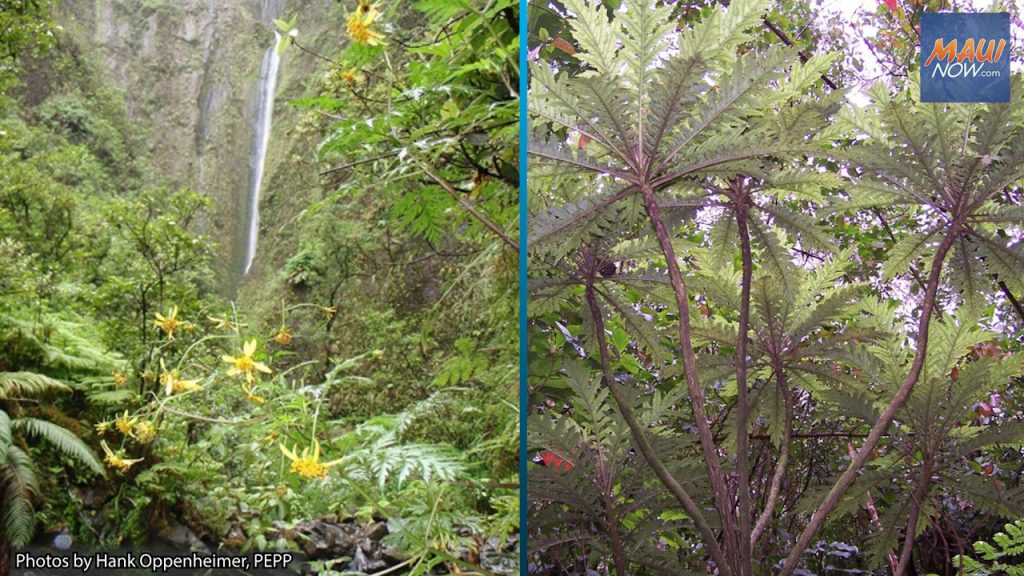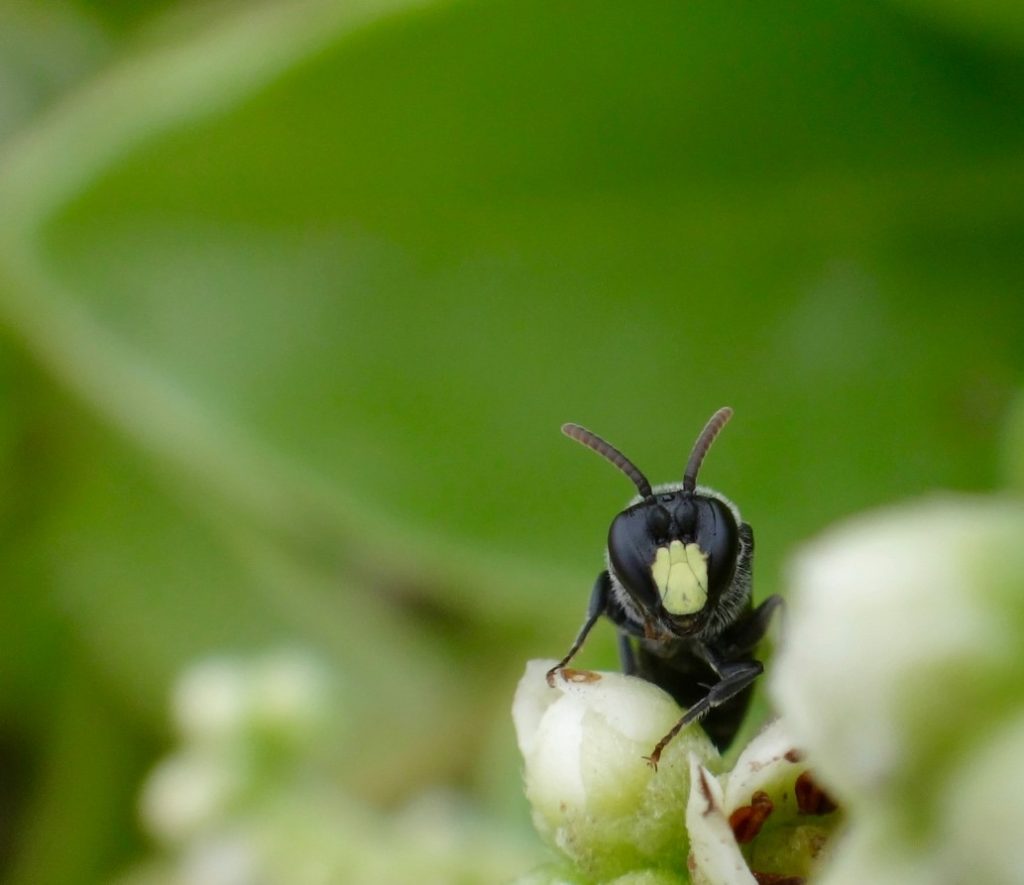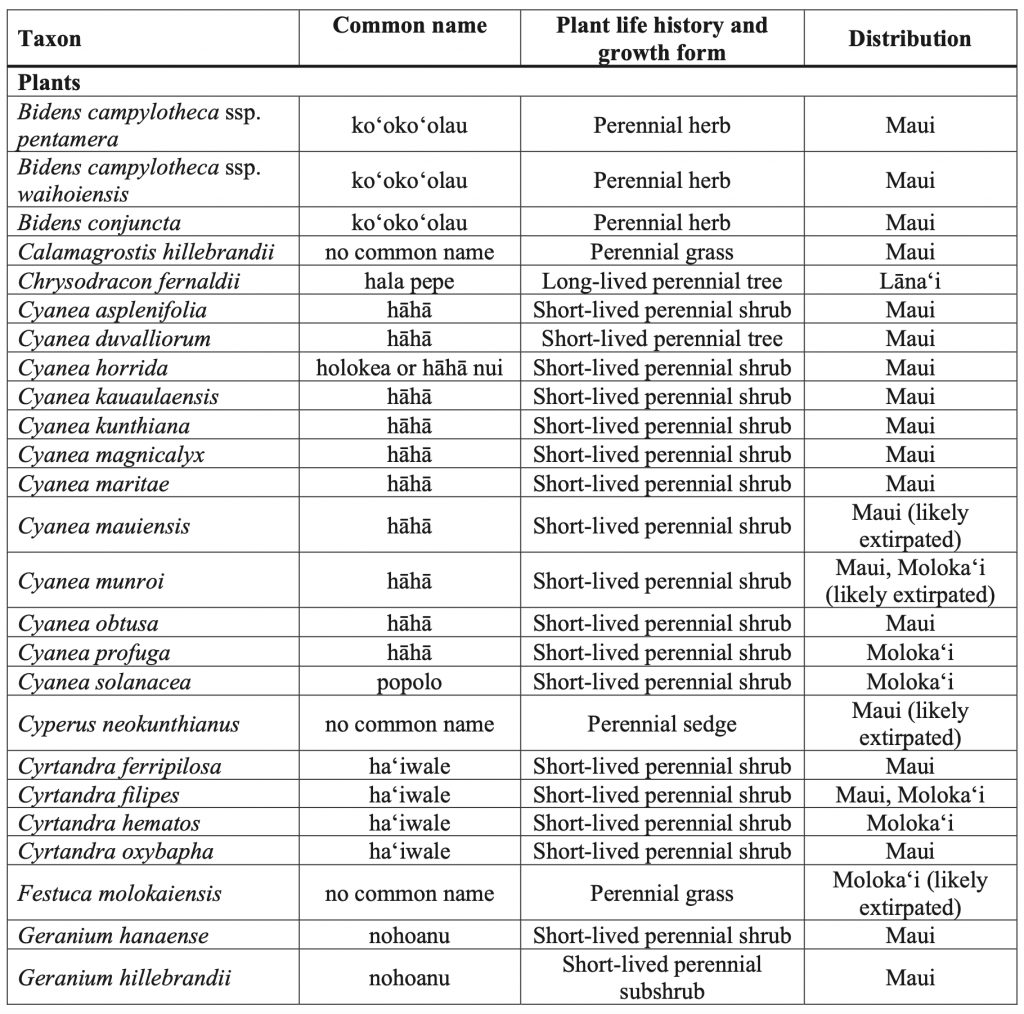Draft recovery plan proposed for 44 endangered Hawaiian species in Maui Nui

The US Fish and Wildlife Service has published a draft recovery plan for 44 endangered species that either occur or have occurred on the Hawaiian Islands of Molokaʻi, Lānaʻi, Kahoʻolawe, and Maui, collectively known as Maui Nui.
Recovery plans are roadmaps for the Service and partners to prevent extinction of species and support recovery. This plan covers 40 plants, three tree snails, and one yellow-faced bee.

Photo: Sheldon Plentovich / courtesy Hawaiʻi State Department of Land and Natural Resources
Hawaiʻi is home to 578 species protected under the Endangered Species Act, with many found nowhere else in the world.
The 44 species covered in the draft recovery plan are listed as endangered under the ESA and are currently at risk of extinction. The ESA defines threatened as species at risk of extinction in the foreseeable future. All the species in the draft recovery plan face similar threats – habitat loss, introduced disease and non-native and invasive predators like rats, cats, and pigs. In addition, climate change is exacerbating and accelerating these threats across the Hawaiʻi and the Pacific Islands.
“Recovery plans are an important step towards the rehabilitation of a species,” said Earl Campbell, Pacific Island Fish and Wildlife Office field supervisor in an agency press release. “Hawaiʻi is unique because many of the native and endemic species evolved for centuries in isolation, free from threats. Conservation strategies include addressing threats of invasive species, disease, and habitat loss that are being amplified by effects of climate change. These challenges showcase how important it is to continue working with our conservation partners, as we strive to preserve our native and endemic species for future generations.”
The 40 plants addressed in the recovery plan face varying degrees of habitat loss and decline. Introduced ungulates, like deer and other hooved mammals, are destructive to the native vegetation in all the occupied or suitable habitats of the 40 plant species as they create trails that damage native vegetation cover, destabilize substrates causing erosion, injure roots and seedlings through trampling, create gullies that contribute to flooding, and promote invasion of nonnative species through transportation of seeds.
Invasive plant species, threats of fire and drought, disease, and predation from rodents and insects are also factors that threaten the 40 plants. Introduced ants interfere with pollinators such as yellow-faced bees by consuming large quantities of nectar without pollinating the plant.
Diseases like rapid ʻōhiʻa death is an ongoing threat to ʻōhiʻa lehua, an important canopy tree in forest habitats that are home to endangered plants and animals. Rapid ʻōhiʻa death, associated with fungal pathogens (Ceratosystis spp.), kills individual trees as well as groups of trees. The disease is present on Maui and poses a significant threat to ʻōhiʻa on Lānaʻi and Molokaʻi if it were to become established on those islands. Other disease threats include myrtle rust (Austropuccinia psidii) and powdery mildew (Neoerysiphe galeopsidis). The latter which affects plant species in the genus Phyllostegia.
The agency says the ESA has been “extraordinarily effective” in preventing extinctions, with more than 99% of all listed species still with us today. The ESA has also spurred unprecedented partnerships on behalf of wildlife conservation in America, with diverse states, federal agencies, private landowners and stakeholders coming together to conserve and recover listed species and their habitats.
In total, 54 species have been delisted and 56 downlisted due to recovery since the ESA was passed into law in 1973.
The draft plan will be available for public comment for 90 days. An electronic copy of the draft recovery plan is available online.
To submit written comments, the following methods are available:
- Written comments to field supervisor: Attention: 44 Maui Nui Species Draft Recovery Plan, Pacific Islands Fish and Wildlife Office, at the above Honolulu address.
- Send comments by email to [email protected]. Include “44 Maui Nui Species Draft Recovery Plan Comments” in the subject line.
In order to be considered, comments on the draft recovery plan must be received on or before May 16, 2022. All comments and materials received will become part of the public record associated with this action. The USFWS will accept comments received or postmarked on or before May 16.
Species Status:
These 44 species were listed as endangered in May 28, 2013 and Sept. 30, 2016. Critical habitat was designated for 33 of the 44 species in 2016.











